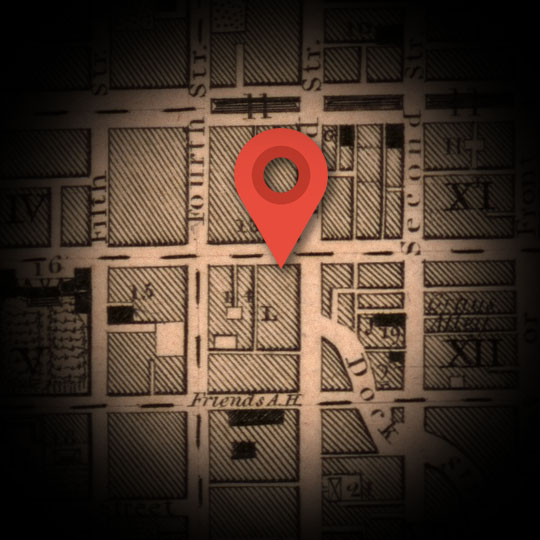TREASURY DEPARTMENT
Explore
It’s fitting that the site of Alexander Hamilton’s Treasury Department (when the federal government was hosted by Philadelphia from 1790-1800) was just catty-corner to what is now the Museum of the American Revolution. That’s because American liberty had to be secured not only on the battlefield and in legislative halls; it had to be secured on the banker’s balance sheets as well.
Here at the southwest corner of Third and Chestnut Streets in Philadelphia, at 100 Chestnut in the 1790s, was a building rented by the new federal government for most of the Treasury Department offices. The actual Treasurer of the United States—a position below Hamilton’s in the pecking order—was elsewhere.
The area would become the heart of Philadelphia’s financial district. Although Philadelphia as a banking center is now greatly overshadowed by New York, it was no slouch throughout most of early American history.
Alexander Hamilton enjoyed a very short commute to work, and also a short commute to George Washington’s home.
This is where we understand Hamilton first came face to face with James Reynolds, the husband of Hamilton’s infidelitous lover, Maria Reynolds.
America’s first sex scandal wasn’t the only rough time for Hamilton while he was at the helm of the Treasury Department. He also had to steer through the (financial) Panic of 1792. Hamilton acted the part of a central banker during a time period when there were essentially no rules written for such a role. He had to rush to contain the crisis in large part set off by his own friend and former assistant, William Duer. Duer had disastrously overextended himself in a scheme to buy up government securities on borrowed money.
The next year, 1793, Philadelphia was visited with a ghastly Yellow Fever epidemic. And all the while Hamilton was feuding with Thomas Jefferson in person, anonymously, and by proxies in the newspapers.

TIME FRAME:
1790-1795
